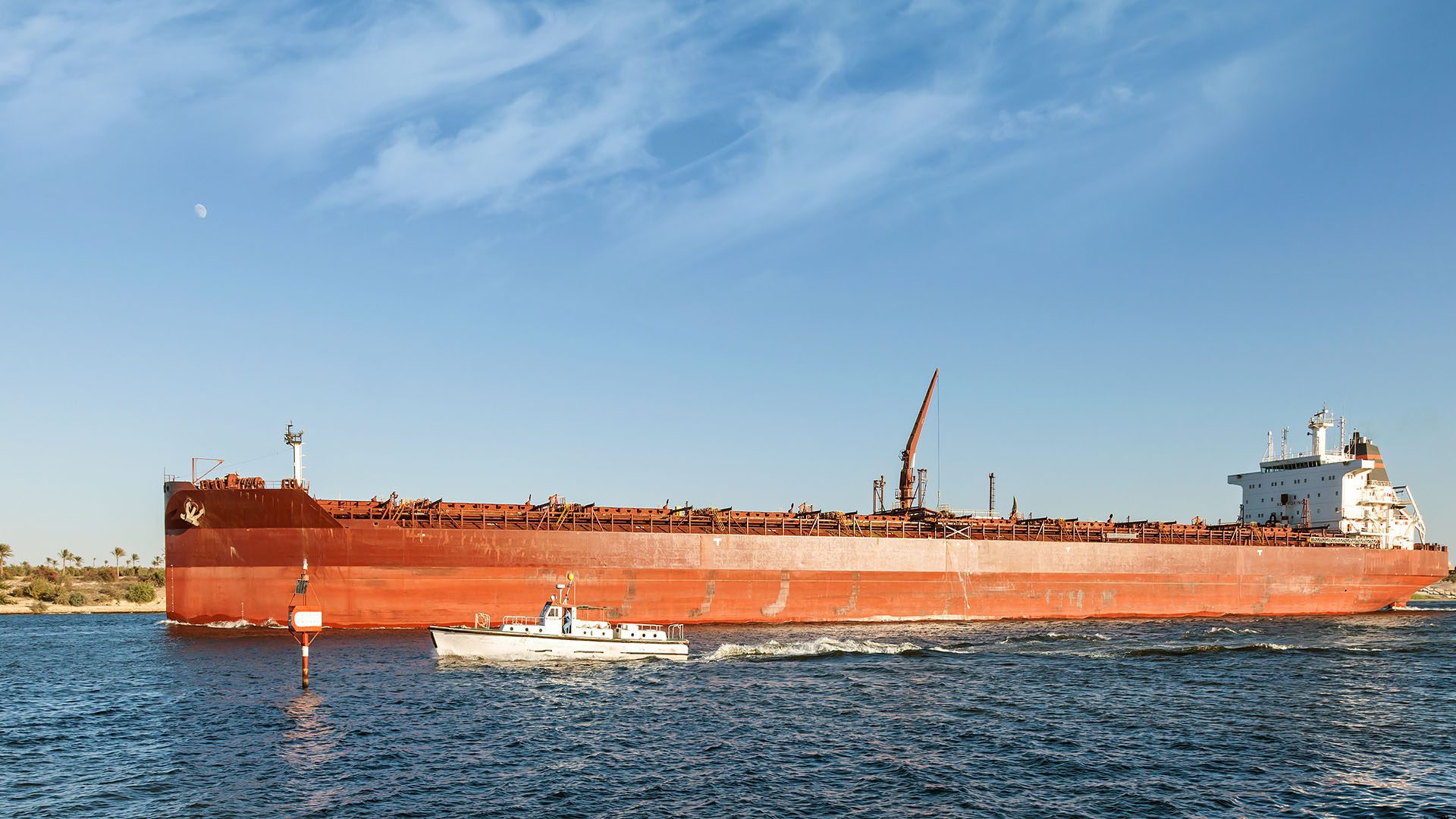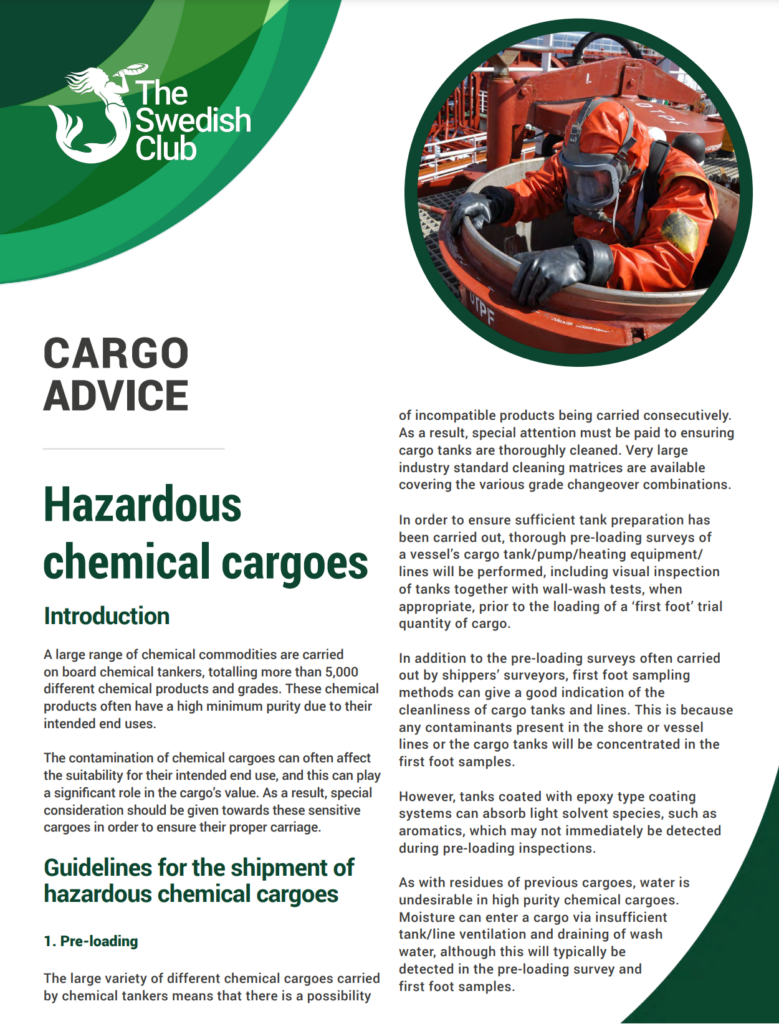
Tanker Vessels
Cargo claims are the most common and costly category of P&I claims. Our statistics show that 10% of all insured tanker vessels suffer a cargo claim a year.
Contamination
Contamination claims are often caused by insufficient cleaning of the vessel’s tanks or improper cargo handling during loading/discharge by the vessel’s crew.
To avoid a contamination claim, thorough, adequate cleaning of tanks, pumps and lines is crucial. The extent of cleaning has to be seen in relation to the cargo previously carried and loaded. The shipper’s advice should be sought regarding the cleaning standard and procedure required as the shipper is the party best placed to know the requirements of the cargo to be carried. However, it should be noted that the vessel is not absolved from liability if the tanks have been inspected and approved by the shipper’s or the charterer’s surveyor, even if the charterparty contains a stipulation to that effect.
Blending/commingling
Requests to blend or commingle oil cargoes usually come from charterers or shippers. These procedures are potentially complicated and can expose members to very large claims for off-spec cargo at the port of destination. It can also jeopardise the P&I cover. It should be kept in mind that the master and crew have limited scientific knowledge of the inherent characteristics of chemicals or other oil products. Should it prove necessary, it is of the utmost importance that the shipowner and master consult specialists in the field on loading, with the assistance of the Club. When accepting to blend/commingle cargo, it is essential that the master:
- Clauses the bill of lading accordingly
- Takes samples
In addition, the Club recommends that members obtain a Letter of Indemnity from shippers or charterers.
Sampling
The vessel’s responsibility starts and ends at the vessel’s manifold. If using the vessel’s hose, the responsibility starts and ends at the hose connection ashore.
Before loading, a Tank Clean Certificate, if applicable, should be obtained from the surveyor. At the start of loading, the crew should take samples at the vessel’s manifold. It is important that the very first product loaded is sampled.
If applicable for the grade to be carried, first foot samples should be taken and analysed before the loading is allowed to continue. Upon completion of loading, samples should be taken by the crew from all tanks. Depending on the cargo’s composition, it may be necessary to take samples at different levels in the tanks.
In the discharge port, it is strongly recommended that the vessel’s crew takes samples from each tank before the discharge operation commences. Samples should be representative, and the sampling method depends on the grade. In addition, the crew should take samples at the vessel’s manifold at the commencement of the discharge of each parcel.
The cargo surveyor often attends on behalf of the shipper and the receiver. To protect the vessel’s interests, the crew should take their own samples, which is to be kept on board.
Cargo advice

Hazardous chemicals
A large range of chemical commodities are carried onboard chemical tankers, totalling more than 5,000 different chemical products and grades. These chemical products often have a high minimum of purity due to their intended end uses. The contamination of chemical cargoes can often affect the suitability for their intended end-use, and this can play a significant role in the cargo’s value. As a result, special consideration should be given towards these sensitive cargoes in order to ensure their proper carriage.

MEG
Monoethylene glycol (MEG) is a fine chemical product that is primarily used as a precursor in the manufacture of polyester and PET resins, with global production for 2025 expected to be in excess of 71m tonnes. MEG is considered a sensitive cargo due to the way it is used in the production of polymers. The presence of trace impurities may interfere with catalysts and processes used to produce these polymers. As such care must be taken to ensure the cargo remains free of contaminants during transportation.

Petroleum
Refined petroleum cargoes, classified by their hydrocarbon ranges such as gasoline (C5–C10), jet kerosene (C10–C16), and gasoil (C14–C20), are transported via the shipping industry. Proper tank preparation, including cleaning and segregation, is crucial to prevent contamination from previous cargoes, ensuring the integrity of these products throughout their journey.

Vegetable Oil
Vegetable oils and fats are extracted from fruits and seeds, their composition varying depending on the source of the seed. The terms fat and oil are defined based on their consistency at room temperature, with oils being liquid at room temperature and fats being solid. In general, vegetable oils consist predominantly of triglycerides